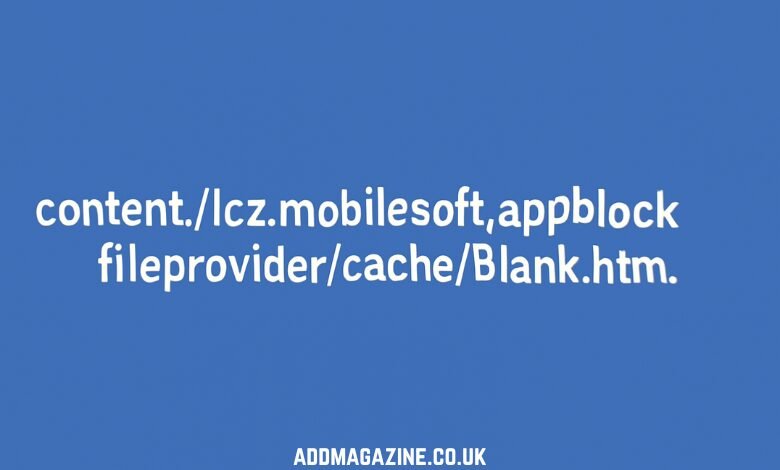In today’s hyper-competitive digital landscape, the difference between business success and failure often comes down to one critical factor: user experience. While off-the-shelf solutions might seem like the quick fix, forward-thinking companies are discovering that custom software development is the secret weapon for creating truly exceptional user experiences that drive engagement, loyalty, and bottom-line results.
Why Generic Solutions Fall Short in the User Experience Game
Picture this: you walk into a high-end tailor shop wearing an ill-fitting suit from a department store. The tailor immediately spots dozens of issues – the shoulders are too wide, the length is wrong, and the overall fit just doesn’t work for your unique body type. This is exactly what happens when businesses try to force their unique processes and user needs into generic software solutions.
Off-the-shelf software is designed for the masses, which means it’s optimized for no one in particular. Users end up wrestling with unnecessary features, confusing workflows, and interfaces that don’t match their mental models of how work should get done. The result? Frustrated users, decreased productivity, and ultimately, a poor user experience that reflects negatively on your brand.
Custom software development flips this script entirely. Instead of forcing users to adapt to rigid software constraints, custom solutions adapt to users’ natural workflows, preferences, and goals. This fundamental shift from software-centric to user-centric design is what separates good user experiences from great ones.
The Psychology Behind Exceptional User Experiences
Understanding user experience isn’t just about making things look pretty – it’s about understanding human psychology and behavior. When users interact with software, they’re not just clicking buttons; they’re trying to accomplish meaningful goals while dealing with cognitive limitations, emotional states, and contextual pressures.
Custom software developers who truly understand UX design recognize that every interaction is an opportunity to either delight or disappoint. They consider factors like cognitive load, decision fatigue, and the user’s emotional journey throughout the application. This psychological awareness allows them to craft experiences that feel intuitive, efficient, and even enjoyable.
For instance, a custom CRM system might recognize that sales representatives are often juggling multiple calls while updating records. Instead of requiring complex navigation through multiple screens, a well-designed custom solution might use contextual pop-ups, voice-to-text capabilities, or intelligent auto-fill features that reduce friction and support the user’s natural workflow.
Breaking Down the Custom Development Advantage
Tailored User Journeys
The most significant advantage of custom software development lies in its ability to create user journeys that perfectly align with your specific business processes and user needs. Instead of generic workflows that sort of work for everyone, custom solutions can eliminate unnecessary steps, automate routine tasks, and present information exactly when and how users need it.
Consider a manufacturing company that needs to track quality control data. An off-the-shelf solution might require users to navigate through multiple screens, enter redundant information, and work around features they don’t need. A custom solution could integrate directly with existing equipment, auto-populate relevant fields, and present data visualizations that immediately highlight issues requiring attention.
Seamless Integration Capabilities
Custom software doesn’t exist in isolation – it needs to play nicely with existing systems, databases, and workflows. This integration capability is crucial for maintaining a smooth user experience across all touchpoints. When software systems work together seamlessly, users can focus on their core tasks instead of wrestling with data silos and incompatible interfaces.
A custom solution can be designed from the ground up to integrate with your existing tech stack, whether that includes legacy systems, cloud platforms, or third-party APIs. This integration eliminates the friction points that often plague off-the-shelf solutions, creating a more cohesive and efficient user experience.
Scalability That Grows With Users
One of the most overlooked aspects of user experience is how software performs as usage grows. Custom software development allows for scalable architecture that maintains performance and usability even as user bases expand and feature requirements evolve.
This scalability isn’t just technical – it’s experiential. Custom solutions can be designed with modular interfaces that reveal complexity gradually as users become more sophisticated. New users aren’t overwhelmed by advanced features they don’t need, while power users can access deep functionality when required.
The Business Impact of Custom UX
Increased User Adoption and Engagement
When software feels natural and intuitive, users don’t just tolerate it – they embrace it. Custom solutions designed with user experience at the forefront see dramatically higher adoption rates because they solve real problems in ways that make sense to the people using them daily.
This increased adoption translates directly to business value. Employees become more productive, customers engage more deeply with digital touchpoints, and stakeholders across the organization see tangible benefits from technology investments.
Reduced Training and Support Costs
Intuitive custom software significantly reduces the time and resources required for user training and ongoing support. When interfaces align with users’ existing mental models and workflows, the learning curve flattens dramatically. Users can become productive quickly, and support teams field fewer questions about confusing functionality or workaround procedures.
Competitive Differentiation Through Experience
In markets where products and services are increasingly commoditized, user experience becomes a primary differentiator. Custom software allows companies to create unique, branded experiences that reinforce their value proposition and build customer loyalty in ways that generic solutions simply cannot match.
Addressing the Investment Consideration
Let’s address the elephant in the room: custom software development pricing. Yes, custom solutions typically require a larger upfront investment than off-the-shelf alternatives. However, this perspective misses the total cost of ownership calculation that smart businesses always consider.
Generic software often comes with hidden costs: customization fees, integration expenses, ongoing licensing, and the productivity losses associated with poor user experience. Custom solutions eliminate many of these hidden costs while providing long-term value through improved efficiency, reduced support needs, and the ability to evolve with changing business requirements.
More importantly, the user experience advantages of custom software often generate returns that far exceed the initial investment. Higher user adoption, increased productivity, and improved customer satisfaction create measurable business value that compounds over time.
The Development Process: Putting Users First
Creating exceptional user experiences through custom software requires a development approach that puts users at the center of every decision. This means conducting thorough user research, creating detailed personas, mapping user journeys, and continuously testing and refining interfaces based on real user feedback.
The most successful custom software projects involve users throughout the development process, not just at the beginning and end. Regular user testing, feedback sessions, and iterative design improvements ensure that the final product truly meets user needs and expectations.
Leading development companies like Devsinc have perfected this user-centric approach, combining technical expertise with deep user experience knowledge to create software that doesn’t just function well – it delights users and drives business results.
Future-Proofing Through Custom Solutions
Technology landscapes evolve rapidly, and user expectations continue to rise. Custom software development provides the flexibility to adapt to these changes while maintaining a consistent, high-quality user experience. Unlike off-the-shelf solutions that depend on vendor roadmaps and mass-market priorities, custom software can evolve precisely how your business and users need it to.
This future-proofing extends beyond just adding new features. Custom solutions can adapt their user interfaces, interaction patterns, and underlying architectures to incorporate new technologies and design trends without disrupting established user workflows.
Conclusion
Custom software development isn’t just about building technology – it’s about crafting experiences that empower users to achieve their goals efficiently and enjoyably. In a world where user experience increasingly determines business success, the ability to create perfectly tailored software solutions becomes not just an advantage, but a necessity.
The investment in custom software development pays dividends through improved user satisfaction, increased productivity, and competitive differentiation that off-the-shelf solutions simply cannot provide. For organizations serious about delivering exceptional user experiences, custom software development isn’t just an option – it’s the path forward.




